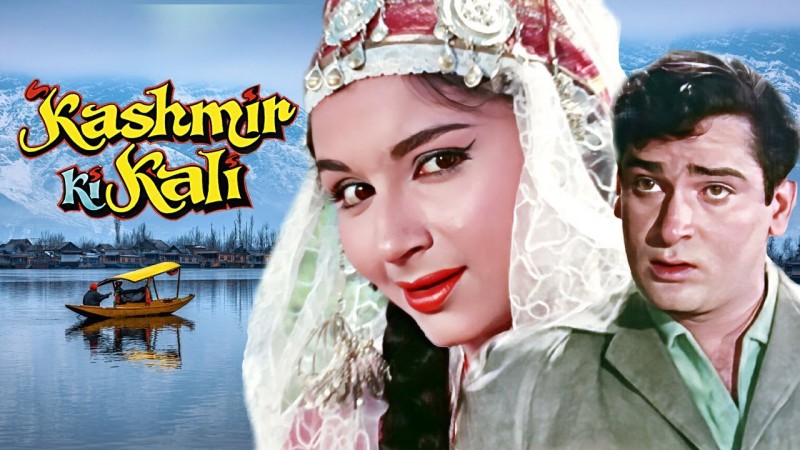
Few films in the history of Indian cinema have so successfully won over audiences as the timeless classic "Kashmir Ki Kali." This 1964 romantic drama starring Shammi Kapoor and Sharmila Tagore has endured the test of time, captivating generations with its captivating plot, catchy songs, and stunning cinematography. However, behind the scenes, the creation of this cinematic masterpiece was an exhilarating journey marked by a formidable obstacle: 21 days of nonstop, heavy rains in Kashmir.
They knew they were in for a cinematic treat as the "Kashmir Ki Kali" production team set out on their journey to capture the mesmerising beauty of the Kashmir Valley. The picturesque scenery, clear lakes, and snow-capped mountains offered the ideal setting for a love story that would enthral viewers for many years to come. But nature had other ideas.
The picturesque locations the crew had carefully chosen for their scenes were soaked during the first few days of the shoot in Kashmir when the skies opened up in a torrential downpour. The cast and crew struggled against the elements for 21 long days, their spirits crushed by the never-ending downpour that showed no signs of stopping.
Even in the best of circumstances, making films is a difficult and complex process. However, the challenges multiplied greatly in the face of such unfavourable weather conditions. During those 21 days of nonstop rain, the team faced the following difficulties, which they overcame:
Schedule disruption: The rain delayed and created uncertainty in the carefully planned shooting schedule. Scenes that should have been finished quickly instead took much longer due to the slick terrain and wet equipment.
Moving tools, decorations, and costumes turned into a logistical nightmare. Both the crew and the actors had transportation issues due to the muddy roads and persistent rain.
Health Issues: The cast and crew's health suffered as a result of prolonged exposure to cold and wet weather. Many became ill, which further slowed down production.
Damage to Sensitive Film Equipment: The use of sensitive film equipment at the time put it at risk of water damage. The expensive equipment needed to be protected, so extra care had to be taken.
Adapting to the unpredictable weather and rethinking scenes due to the constant rain caused the creative team to experience creative frustration and stress.
The "Kashmir Ki Kali" team showed remarkable resiliency and determination despite the constant rain and the mounting difficulties. They were determined to realise their vision and would not allow the wrath of nature to prevail over them. Their unwavering dedication to the project paid off in the end.
When it appeared that the movie's future was in doubt following 21 days of nonstop rain, a glimmer of hope appeared. The production was blessed by the heavens as the weather in Kashmir abruptly improved. A miraculous turn of events then occurred.
The Kashmir Valley had 25 continuous days of sunshine, as if to make up for the 21 days of nonstop rain. The production crew was able to make up lost time and finish Kashmir on schedule thanks to this unanticipated gift from nature.
The team toiled arduously to capture Kashmir's breathtaking beauty as the sun cast its golden glow over the Valley. The lush green pastures, clear lakes, and snow-capped mountains served as the canvas on which the love story of "Kashmir Ki Kali" was depicted. A cinematic masterpiece that is still cherished by viewers all over the world was produced by the crew's tenacity and the stunning backdrop.
"Kashmir Ki Kali" went on to become a huge success, not only for its alluring plot and excellent performances, but also for the extraordinary commitment and tenacity of its cast and crew. The movie's lasting legacy stands as a testament to the triumph of the human spirit over adversity, a theme that is consistent with the timeless love story it depicted on screen.
The production of "Kashmir Ki Kali" is remembered as a notable period in Indian cinema. It is evidence of the indomitable spirit of filmmakers who defy the difficulties presented by nature. The unpredictable nature of filmmaking, where perseverance and creativity are the keys to success, is encapsulated by the 21 days of nonstop, heavy rain followed by the 25 days of continuous sunshine. As we continue to be in awe of this cinematic masterpiece, we must also keep in mind the untold tale of how it came to be: how human tenacity and the fury of nature combined to create a masterpiece that has won audiences over for decades.
How 'Kahaani' Became a Melting Pot of Talent